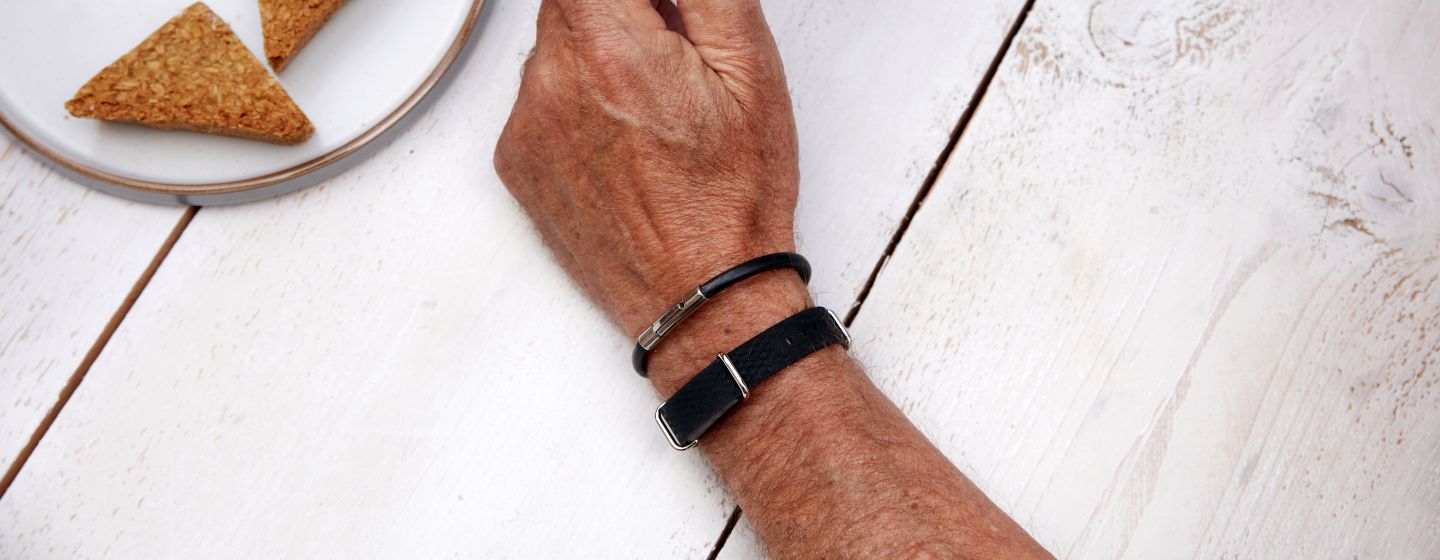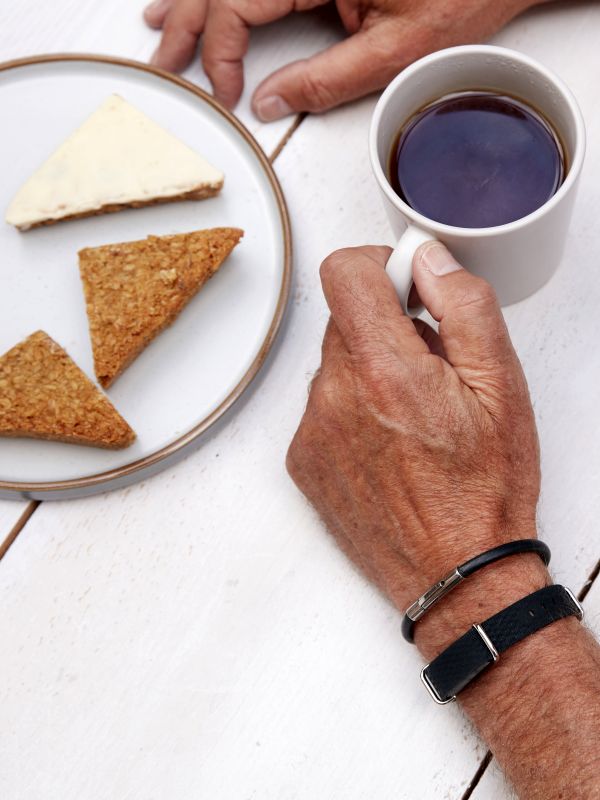Welcome to Part 2 of our double feature on UPFs. In Part 1, we gave you a breakdown of what UPFs are and the risk they pose to your health. In this second installment we will address how they can be avoided and even fought against, as well as the strategies you can put in place for a healthier lifestyle. Let’s dig in!
The Power of Addiction and Prevention
A recent analysis of two systematic reviews including 281 studies in 36 countries by scientists from the US, Spain and Brazil, published in the BMJ, found that 14% of adults and 12% of children have an addiction to ultra-processed foods. The subjects showed signs of intense cravings, withdrawal symptoms, and loss of control over intake with the addictiveness attributed to the food’s engineered balance of flavours and textures. It has been suggested that the way that UPFs affect the brain’s reward centres is like substance-use disorders, leading to compulsive consumption and even binge-eating disorders. This was also observed by Dr Chris van Tulleken, who challenged himself to only eat UPFs for a month.
While UPFs are ingested through diet, it stands to reason that prevention of their impact can be achieved through removing them entirely, or avoiding them as much as you can. A diet rich in whole foods is known to significantly reduce the risk of developing high blood pressure (hypertension) and other chronic diseases caused by hypertension. This preventive approach is not just about cutting out harmful foods but about embracing a healthier lifestyle.
The profound impact of the dietary shift toward UPFs is evident in the rising rates of obesity and related health conditions. Recognizing the addictive nature of UPFs’ is therefore crucial for devising effective health policies and individual health strategies or interventions.
Reversing the Trend: Lifestyle Strategies
Incorporating healthy diet choices and avoiding UPFs requires a combination of informed shopping, meal planning, and mindful eating. Some practical tips to help move away from UPFs are:
1. Read labels
Look for products with a short list of recognizable ingredients. Avoid items with high levels of sugar, salt, and unhealthy (saturated) fats, as well as artificial additives and preservatives. Understanding ingredient lists can be challenging, and not everyone can easily remember or identify “bad” ingredients. In this context, the use of food-scanning apps can be incredibly helpful. For instance, apps like the NHS Food Scanner, Yuka, and Code Check allow users to quickly scan product labels to get detailed information about the ingredients.
2. Shop at the edges
Fresh fruits, vegetables, lean meats, and dairy are typically located around the store’s edges whereas processed foods are often found in the centre and ends of aisles.
3. Prioritise whole foods
Choose whole, unprocessed foods like fresh fruits and vegetables, whole grains, nuts and seeds, lean proteins, and legumes for nutritious foods that are free of the excessive processing found in UPFs.
4. Plan meals
Meal planning can help you avoid the temptation of convenience foods. Prepare a weekly menu and make a shopping list to stick to healthier choices.
5. Cook and prep at home
Home-cooked meals give you control over ingredients and cooking methods. Batch cooking and preparing meals in advance can save time and reduce the temptation to opt for UPFs.
6. Explore healthier alternatives
Swap out sugary cereals for porridge topped with fresh fruit and nuts. Make homemade versions of commonly processed foods like pizzas, burgers, or snacks using whole food ingredients.
7. Mind your portion size
Even healthier foods can contribute to weight gain if eaten in excessive amounts. Pay attention to portion sizes and listen to your body’s hunger and fullness cues.
8. Make gradual changes
Transitioning to a healthier diet doesn’t have to be abrupt. Start by making small, sustainable changes like snacking with whole food options, such as fruit, plain yoghurt or nuts.
9. Educate yourself on nutrition
Understanding the basics of nutrition can empower you to make healthier choices. Look for reliable sources of information to learn more about balanced diets.
10. Hydrate your day
Drink plenty of water throughout the day. Limit sugary drinks and opt for water, herbal teas, or freshly squeezed juices.
11. Seek support
Share your health goals with family and friends. They can offer support, accountability, and even join you in making healthier choices.
12. Know your numbers
Regularly monitoring vital health metrics like blood pressure can provide a clear picture of how dietary choices impact your health.
Investing in a reliable blood pressure monitor, such as the Aktiia blood pressure monitoring device, allows you to track the effects of dietary changes on your blood pressure in real-time. This practice can also be a powerful motivator – tangible improvements in your numbers can encourage you to continue making healthy food choices, like avoiding UPFs – it’s what we’ve termed the Aktiia effect.
Keeping track of these numbers not only helps in managing existing conditions but also serves as a preventive measure for potential health issues. It’s also worth incorporating regular blood pressure check-ups into your routine, making it as habitual as meal planning or grocery shopping. This proactive approach can significantly enhance the effectiveness of your dietary changes. A greater level of awareness coupled with proactive blood-pressure monitoring could be pivotal in combating the adverse effects posed by UPFs and helping people make informed decisions about their health.
Discover the latest advances in blood pressure monitoring and learn how to stay in the healthy range. Sign up for our newsletter now!
Changing Regulatory Landscape Around UPFs
The increasing awareness of the risks associated with UPFs is driving a significant shift in the regulatory landscape. Key among proposed measures is the introduction of addiction warning labels on UPF packaging, like those on cigarettes. These warnings aim to inform consumers about the potential risks of UPFs, such as obesity, heart disease, and hypertension. Alongside this, there is a call for stricter advertising and marketing regulations, particularly targeting the promotion of UPFs to children.
Reformulation mandates for UPFs to reduce harmful ingredients like salt, sugar, and unhealthy fats are also under consideration. This approach has seen success in areas like reduced sugar content in soft drinks. There could also be new taxation strategies on UPFs, similar to sugar taxes. Such measures could not only influence consumer behaviour towards healthier choices but also provide funding for public health initiatives, although this may not be straightforward.
Global collaboration and standardisation of regulations are crucial due to the international nature of food production and distribution. This, coupled with public education campaigns, could significantly enhance the effectiveness of these regulatory measures. Plus, there’s growing emphasis on incentivizing the production and sale of healthier food options, making them more accessible and affordable. These evolving regulations, aimed at curbing the impact of UPFs, reflect a broader movement towards creating a healthier food environment and improving public health outcomes.
From Hidden Dangers to Informed Choices
In the murky world of UPFs, knowledge is power: the power to protect our well-being. Understanding how they are engineered and the health risks they pose is crucial. This awareness is the first step in making informed choices about UPFs which have become staples in our diets.
While regulations surrounding them are gradually evolving, by recognizing their addictive nature and potential health risks, individuals have the power to make immediate changes. Technologies like the Aktiia blood pressure system empower people to take control. By providing real-time insights into how dietary choices affect blood pressure, the Aktiia device helps motivate people to make healthier choices that steer clear of UPFs.
Ultimately, “you are what you eat” is a profound truth; our dietary choices shape our health and quality of life. Choosing whole, unprocessed foods over ultra-processed ones is not only about our blood pressure but also our overall health. It is about embracing a lifestyle that values nutrition, wellness, and informed choices. With the right knowledge and tools, every individual can transform their health, one meal at a time.
Disclaimer: The information in this article is for educational purposes only and not intended as medical advice. If you have any health concerns, please consult with your physician or qualified healthcare provider. Any changes to your diet or lifestyle should be made under medical supervision. The author and publisher are not responsible for any adverse effects resulting from the use or application of the information presented in this article.
Sources:
A. N. Gearhardt; N. B. Bueno; A. G. DiFeliceantonio and co-workers (2023). Social, clinical, and policy implications of ultra-processed food addiction. BMJ, 383, e075354. https://doi.org/10.1136/bmj-2023-075354
What happened when I ate ultra-processed food for a month. BBC. https://www.bbc.co.uk/food/articles/van_tulleken (Accessed January 2025)
L. J. Appel; T. J. Moore; E. Obarzanek; W. M. Vollmer et al. (1997). A Clinical Trial of the Effects of Dietary Patterns on Blood Pressure. New Engl. J. Med., 336, 1117. https://doi.org/10.1056/NEJM199704173361601
C. A. Monteiro; J.-C. Moubarac; R. B. Levy; D. S. Canella et al. (2018). Household availability of ultra-processed foods and obesity in nineteen European countries. Pub. Health Nutr., 21 (1), 18. https://doi.org/10.1017/S1368980017001379
Know Your Numbers: The Importance of At-home Blood Pressure Readings for Good Health. Aktiia. https://hilo.com/art/what-do-blood-pressure-readings-mean (Accessed January 2025)
Get the Measure of Motivation: The Aktiia Effect on Your Blood Pressure. Aktiia. https://hilo.com/art/measure-motivation-aktiia-effect (Accessed January 2025)
Ultra-processed foods need tobacco-style warnings, says scientist. Guardian UK. https://www.theguardian.com/global/article/2024/jun/27/ultra-processed-foods-need-tobacco-style-warnings-says-scientist (Accessed January 2025)
UPF-free: The Next Big Claim in Food and Drink? Euromonitor International. https://www.euromonitor.com/article/upf-free-the-next-big-claim-in-food-and-drink (Accessed January 2025)
D. K. Tobias; K. D. Hall (2021). Eliminate or reformulate ultra-processed foods? Biological mechanisms matter. Cell Metab., 33 (12), 2314. https://doi.org/10.1016/j.cmet.2021.10.005
Majority in UK want new tax on makers of ultra-processed and junk food. Guardian UK. https://www.theguardian.com/society/article/2024/aug/11/uk-new-tax-ultra-processed-junk-food-companies-obesity (Accessed January 2025)







